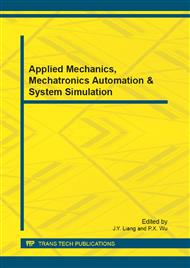p.175
p.179
p.183
p.189
p.193
p.197
p.202
p.207
p.212
Investigation of Relationship between Instrumented Indentation Nominal Hardness and Reduced Elastic Modulus with Large Apex Angle Indenter
Abstract:
Based on dimensional analysis, finite element numerical calculation is undertaken on elastic–plastic solids to investigate the relationship between instrumented indentation nominal hardness Hn and reduced elastic modulus Er for three different apex angle indenters. The half-included angles of axisymetric conical indenter models are 62.9°, 70.3°and 85.566° which are corresponding to the real indenters of cube corner indenter with 60° face angle, Berkovich indenter with 65.27° face angle and cube corner indenter with 85° face angle, respectively. The relationship between a nominal hardness/reduced elastic modulus (Hn/Er) and elastic work/total indentation work (We/Wt) is established with a sixth-order polynomial form for each apex angle indenter. For rigid indenter of instrumented indentation model, reduced elastic modulus Er=1/[(1+v2)/E], where E and v are elastic modulus and Poisson’s ratio of the indented material. Therefore, Hn/Er–We/Wt relationship can be used to give estimates of E. Accuracy estimation for the each relationship of each half-included angle indenter shows that the large half-included angle of 85.566° gives better Er measurement error of +11.56% for a low yield strength material(e.g., materials for which σy=100MPa, n=0 and E=200GPa), while for the smaller half-included angle of 62.9° or 70.3° indenter, the measurement error is > ±12.74%. The research in this paper confirms that Hn/Er–We/Wt relationship of large apex angle indenter such as 85.566° half-included angle is recommended to be used for estimating the elastic modulus E of indented material.
Info:
Periodical:
Pages:
193-196
Citation:
Online since:
September 2012
Authors:
Price:
Сopyright:
© 2012 Trans Tech Publications Ltd. All Rights Reserved
Share:
Citation:


